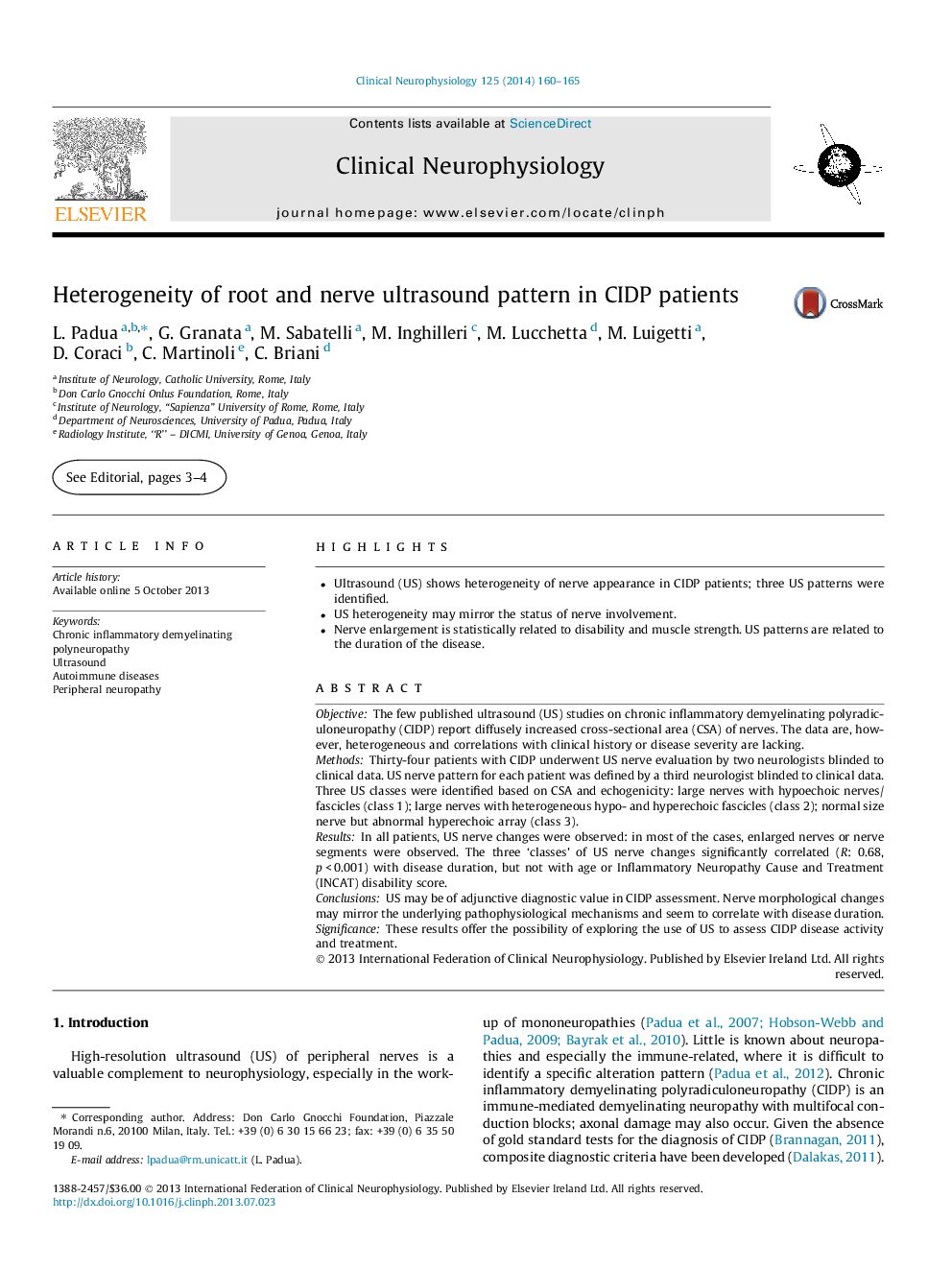| Article ID | Journal | Published Year | Pages | File Type |
|---|---|---|---|---|
| 3043645 | Clinical Neurophysiology | 2014 | 6 Pages |
•Ultrasound (US) shows heterogeneity of nerve appearance in CIDP patients; three US patterns were identified.•US heterogeneity may mirror the status of nerve involvement.•Nerve enlargement is statistically related to disability and muscle strength. US patterns are related to the duration of the disease.
ObjectiveThe few published ultrasound (US) studies on chronic inflammatory demyelinating polyradiculoneuropathy (CIDP) report diffusely increased cross-sectional area (CSA) of nerves. The data are, however, heterogeneous and correlations with clinical history or disease severity are lacking.MethodsThirty-four patients with CIDP underwent US nerve evaluation by two neurologists blinded to clinical data. US nerve pattern for each patient was defined by a third neurologist blinded to clinical data. Three US classes were identified based on CSA and echogenicity: large nerves with hypoechoic nerves/fascicles (class 1); large nerves with heterogeneous hypo- and hyperechoic fascicles (class 2); normal size nerve but abnormal hyperechoic array (class 3).ResultsIn all patients, US nerve changes were observed: in most of the cases, enlarged nerves or nerve segments were observed. The three ‘classes’ of US nerve changes significantly correlated (R: 0.68, p < 0.001) with disease duration, but not with age or Inflammatory Neuropathy Cause and Treatment (INCAT) disability score.ConclusionsUS may be of adjunctive diagnostic value in CIDP assessment. Nerve morphological changes may mirror the underlying pathophysiological mechanisms and seem to correlate with disease duration.SignificanceThese results offer the possibility of exploring the use of US to assess CIDP disease activity and treatment.
